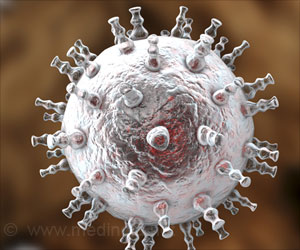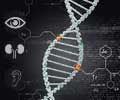Highlights
- CRISPR gene editing tool used to treat chronic granulomatous disease by research team The altered cells were introduced into the host where the immune cells provided protection against bacteria
- The engineered cells did not produce any side effect and remained in the system for 5 months
Ex-Vivo Gene Therapy
The CRISPR-Cas9 system could be useful in altering the mutations that are found to cause diseases, with the alteration occurring in a laboratory and then implanting them back into the body. This allows selective isolation of the cells which need to be altered and the CRSPR-Cas9 system can be controlled. Most often, the mutations that are produced by the CRISPR-Cas9 system may be non-specific and lead to unwanted mutations. However, carrying out these alterations in the genes in a controlled setting could limit the risk for these unwanted mutations.The use of CRISPR-Cas9 system has its fair share of flak due to the unintended mutations. A research team lead by Dr. Suk See De Ravin and associates utilized this ex-vivo gene editing approach that involved the use of this approach in the treatment of chronic granulomatous disease. This is a genetic disorder with limited treatment options that leads to life-threatening infections with the need for antibiotics in the long run. It is caused due to a defect in the NOX2 protein, a vital protein that is required by the immune system to destroy bacteria.
Chronic granulomatous disease does not have a reliable treatment and, so, engineered stem cell transplantation could offer a potential method of treatment. However, the use of this gene editing system does hold a risk of lethal complications that could result in toxicity.
The research team succeeded in:
- Repairing the NOX2 mutation that occur in the stem cells of patients with CGD
- Implanting these cells into mice
- Showing their ability to differentiate into immune cells with their anti-microbial function restored.
- The mice were able to maintain these altered cells for a long period of time
- There were no side effects that were noticed in the mice due to the implantation of these altered cells
- CRISPR-Cas9 system has been found to show a lot of promise in the treatment of this genetic disorder, it could soon be used for a gene based treatment
CRISPR-Cas9 System
This system is a part of an adaptive system that was developed in bacteria for immunity against virses and plasmids. The Cas9 is an endonuclease which uses a guide that target sequences, of DNA and induce a site-specific double-strand break in the DNA.Researchers Jennifer Doudna and colleagues who developed this method of gene editing, made necessary changes to the target DNA which would then bind to the specific target DNA. The CRISPR –Cas9 system was found to be simple and contained a unique DNA cleaving mechanism with the capacity of target recognition that was multiplexed.
This gene editing tool has resulted in a complete revolution, providing a unique solution to many gene editing systems.
- CRISPR-Cas9 system is used in functional genomics where the gene editing tool can be used to identify drug targets and phenotypes that allow the generation of cells that will benefit animal studies.
- Will enhance the ability to insert target sequences into the host.
- Apart from human diseases, CRISPR can also be used to develop new varieties of plants and aid in growing better quality crops.
- Scientists are now trying to identify small molecules to the Cas9 system to make it easier to deliver the system into humans.
- Suk See De Ravin, Linhong Li, Xiaolin Wu, Uimook Choi, Cornell Allen, Sherry Koontz, Janet Lee, Narda Theobald-Whiting, Jessica Chu, Mary Garofalo, Colin Sweeney, Lela Kardava, Susan Moir, Angelia Viley, Pachai Natarajan, Ling Su, Douglas Kuhns, Kol A. Zarember, Madhusudan V. Peshwa, Harry L. Malech. CRISPR-Cas9 gene repair of hematopoietic stem cells from patients with X-linked chronic granulomatous disease. Science Translational Medicine, 2017; 9 (372): eaah3480 DOI: 10.1126/scitranslmed.aah3480
















